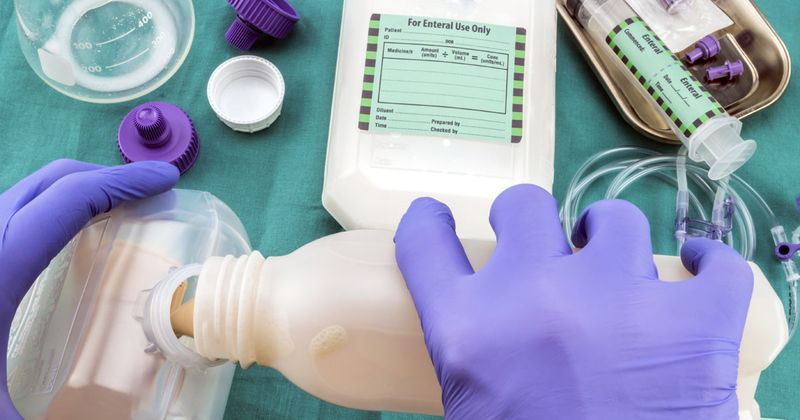Nasogastric tube feeding linked to pneumonia risk in patients with advanced dementia
Hospitalized patients with advanced dementia being fed through a nasogastric tube were at a higher risk for pneumonia than those on careful hand-feeding, according to a study in The Journal of Post-Acute and Long-Term Care Medicine.
“This study helps to strengthen the evidence for careful hand-feeding, particularly for places where nasogastric tube feeding is the predominant mode of long-term enteral feeding in dementia patients,” Jacqueline K. Yuen, MD, clinical assistant professor of the division of geriatrics and department of medicine at Hong Kong University’s School of Clinical Medicine, and colleagues wrote. “Furthermore, it provides evidence to support careful hand-feeding practices in hospitals and residential care homes not only for quality-of-life considerations but also demonstrated feasibility and the potential to reduce pneumonia risk in this population.”

In a retrospective cohort study, Yuen and colleagues evaluated 764 patients (61% women; mean age, 89 years) aged 60 years or older with advanced dementia from two geriatric convalescent hospitals who needed tube feeding between Jan. 1, 2015, and June 30, 2019. Researchers aimed to observe differences in survival and pneumonia risk among patients on nasogastric tube feeding compared with patients on careful hand-feeding.
In order to compare both feeding types for their primary outcomes, researchers utilized Kaplan Meier survival analysis and Cox proportional hazards models.
Researchers observed that feeding problems in the population included dysphagia for 50% and behavioral feeding problems for 33%, with 17% having both types.
Within the total cohort, 464 (61%) received nasogastric tube feeding and 300 (39%) received careful hand-feeding.
The researchers found no difference between tube feeding and careful hand-feeding when measuring 1-year survival rate (median survival, 125 vs. 145 days; adjusted HR = 1.15; 95% CI, 0.94-1.39). Feeding problem type also did not have an impact on survival rates between both groups.
However, researchers found decreased rates of pneumonia at 1 year in the careful hand-feeding group compared with the tube feeding group (48% vs. 60%; P = .004) within the 577 (76%) patients who were discharged.
Further analysis in an adjusted model demonstrated that nasogastric tube feeding was a significant risk factor for pneumonia (aHR = 1.41; 95% CI, 1.08-1.85), according to researchers. Other factors that predicted pneumonia risk included sex (men, HR = 1.41; 95% CI, 1.04-1.91), prior aspiration pneumonia (HR = 1.31; 95% CI, 1.01-1.7) and BMI (HR = 0.97; 95% CI, 0.93-1).
Additionally, researchers observed that tube-fed patients with both identified feeding problem types had higher risk for pneumonia (P = .01), but those with dysphagia or a behavioral feeding problem alone did not show the same increased risk.
“As the practice of tube feeding in advanced dementia patients remains prevalent in Hong Kong and many parts of the world, this research highlights the need for further education of the public and health care providers to improve evidence-based practice around tube feeding decisions in dementia patients,” Yuen said in a press release from the University of Hong Kong.
Reference:
HKUMED finds 40% lower risk of pneumonia among advanced dementia patients on careful hand feeding than on tube feeding. https://www.hku.hk/press/news_detail_25208.html#:~:text=A%20collaboration%20study%20led%20by%20researchers%20from%20the,40%25%20lower%20than%20those%20on%20nasogastric%20tube%20feeding. Published Oct. 11, 2022. Accessed Oct. 21, 2022.
